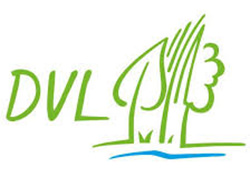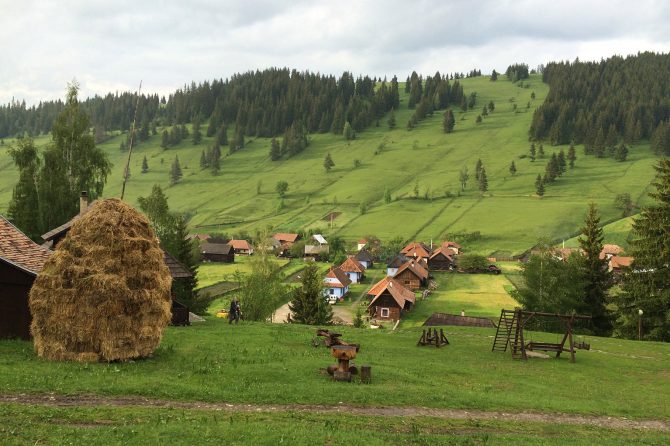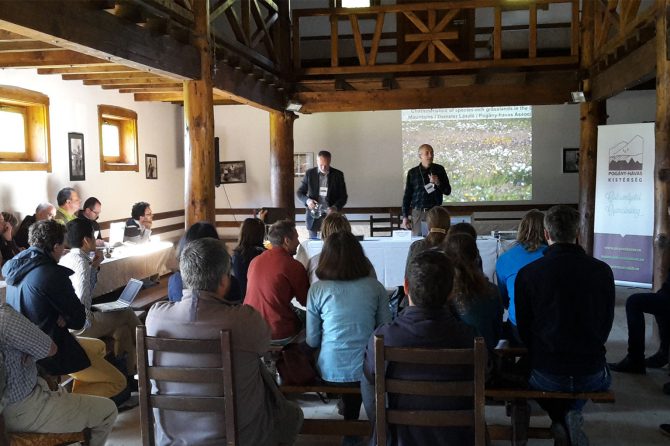2014 ROMANIA
Fostering cooperative nature conservation to preserve and develop the cultural landscape (SEPL) in the Carpathian Region of Pogány-havas
Landcare Germany (Deutscher Verband für Landschaftspflege - DVL), Europe
Partnership building
Landscape
Overview
Extensively managed mountain hay meadows are the richest terrestrial ecosystems of Europe, because they consist of a very high number of plant, insect and other animal species. However, Europe has lost more and more of these sites. The extensive management is very labour intensive and provides a very low income. This had led to an intensifi cation of many extensive grasslands, conversion to pastures or arable fi elds, or their abandonment. Under this project Landcare Germany and the Pogány-havas Regional Association (PHA) organised an international conference on “Management of extensive grasslands in mountain areas” to raise awareness on the value of the species rich mountain grasslands to secure political support for their conservation.
Key achievements
- Examples of marketing local products with a nature conservation value provided models on how to provide farmers with the possibility to gain extra income by high quality hay or grazing lamb/cattle if they continue with extensive management practices.
- The project started to build a network involving the workshop participants who all deal with the same issues and search for innovations and solutions. The network constitutes a basis for future collaboration, events and actions such as the policy seminar in the Brussels.
- International participation was a success factor of the conference, because par ticipants as well as speakers from across Europe could share their experiences and find out that SEPLS in several countries face the same problems, even though political conditions and possible solutions vary.
Lessons
- To build and foster the network, it is critical to:
・Include land users, conservationists and politicians to explore common solutions
・Provide a good and friendly atmosphere so that practitioners can exchange thoughts, problems and solutions with other participants, and stay in touch and continue exchanging ideas
・Raise the awareness of policymakers on the issue - Ideas for the management of cultural landscapes are diverse and cannot be realised in the same way in different countries. However, the overall concept works in distinct contexts, and some of the ideas are useful for specific conditions in other countries.
Project location
Organisation

Landcare Germany (Deutscher Verband für Landschaftspflege - DVL), Europe
- Sector
- Non-governmental organisation
- Country
- Germany
- Website/SNS
- https://www.lpv.de/
Relevant projects
Projects of the same year
Aichi Biodiversity Targets
Aichi Biodiversity Targets
-
Awareness increased
-
Biodiversity values integrated
-
Incentives reformed
-
Sustainable agriculture, aquaculture and forestry
Sustainable Development Goals
Sustainable Development Goals
-
Zero hunger

